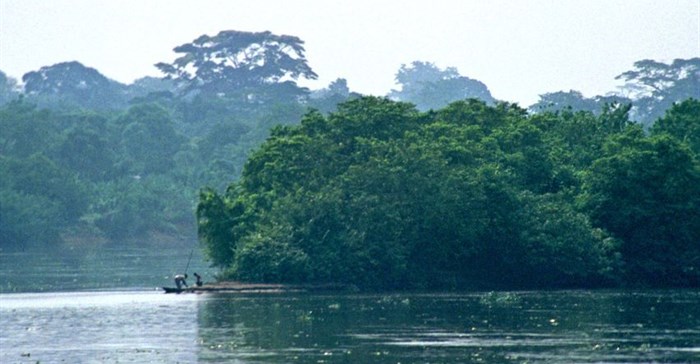Africa's rainforests are different. Why it matters that they're protected

Yet African rainforests are poorly studied compared to those in Amazonia and South East Asia. And the continent’s rainforests are being lost to deforestation at a rate of 0.3% every year. This is slower than in Amazonia (estimated to be 0.5% per year in Brazil) and South East Asia (1% in Indonesia).
But greater losses are likely in the future if palm oil production, driven by growing global demand, expand. Another major threat is logging which is also on the rise.
Help for African rainforests may come from an unexpected source: international policies to tackle climate change.
The world’s tropical forests store 250 billion tonnes of carbon. If global temperature increases are to be kept well below 2°C this carbon needs to be kept locked away in trees rather than released into the atmosphere. Because of this, incentives to conserve forests for their carbon were officially recognised at the Paris climate summit in 2015. Examples include the United Nations REDD+ policy framework.
But our research into the relationship between the amount of carbon forests store and their biodiversity produced two interesting findings. The first suggests that carbon focused approaches like REDD+ will miss many forests with high biodiversity. This is because the forests that store the most carbon are not necessarily home to the most species.
The second is that Africa’s rainforests have unique characteristics. In particular, we found that they store more carbon than those in the Amazon. This makes designing policies that protect them all the more important, and more complex.
Tree diversity and carbon storage
At first glance, incentives to protect forests for their carbon should also benefit biodiversity. This is because they encourage more forests to be protected. But protecting one area often diverts threats to other areas. So, protecting some forests for their carbon could increase human pressure on others. It’s therefore crucial to know the relationship between biodiversity and carbon storage to assess whether carbon-focused conservation will also protect the most biodiverse forests. That’s what we set out to research.
Previous studies have found that ecosystem functions like carbon storage increase with biodiversity. So, it may be expected that the forests with the most tree species also have the most carbon. But it’s unknown whether this positive effect of biodiversity would be evident in high-diversity tropical forests.
To see how carbon and biodiversity were related in mature tropical forests we – a team of 115 scientists from 22 countries – surveyed 360 plots situated across the lowland rainforests of South America, Africa and Asia. In each 1 hectare (100 by 100 m) plot we identified and measured the diameter of every tree. From here, we could estimate the amount of carbon the forest stored.
Surprisingly, we found that tree diversity and carbon storage were completely unrelated, even after we accounted for the effect of climate and soil.
The absence of a relationship between tree diversity and carbon storage means that strategies like REDD+ – that only promote the conservation of forests with the most carbon – will miss some high diversity forests.
That’s not to say that carbon-focused conservation isn’t still important. Conserving forests for their carbon will be vital to reducing the amount the planet warms, and programmes like REDD+ are needed if this is to happen.
But our results indicate that biodiversity has to be explicitly considered when planning protected areas, and not just assumed to automatically benefit from carbon-focused conservation.
Unique characteristics
Our results also contribute to the growing understanding that African rainforests are unique. For example, they store more carbon than those in the Amazon. On average, a hectare of African rainforest stores 183 tonnes of carbon compared to 140 tonnes in the same area of Amazonian rainforest - but do so with 170 fewer trees per hectare.
The extra carbon in African forests comes from trees being larger; the average diameter of a tree in an African rainforest is 1.5 times larger than that of a tree in the Amazon. Trees in African rainforests are also taller than their Amazonian counterparts.
African forests also have fewer tree species than tropical forests in other continents. If you were to identify 300 trees in an African forest you would find, on average, 65 species, compared to 109 species in the Amazon and 120 species in South East Asia. This low diversity may partly be a legacy of past climate, with dry periods in the past wiping out species that require wet conditions all year round.
African rainforests are still important centres of biodiversity despite having fewer tree species than other rainforests. Forests need to be protected to safeguard both the huge number of species that live in them and the vast amounts of carbon they store.
Our results show that it’s not safe to assume that protecting one of these will automatically protect the other. Instead, both biodiversity and carbon need to be considered when planning how to protect Africa’s rainforests.![]()
Source: The Conversation Africa

The Conversation Africa is an independent source of news and views from the academic and research community. Its aim is to promote better understanding of current affairs and complex issues, and allow for a better quality of public discourse and conversation.
Go to: https://theconversation.com/africa






















